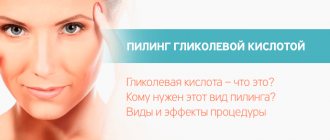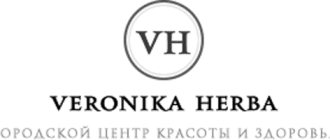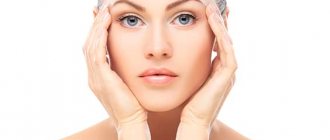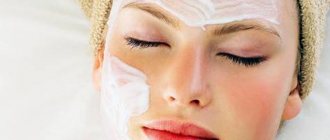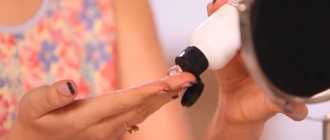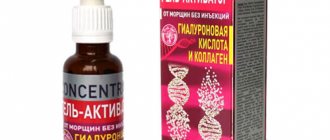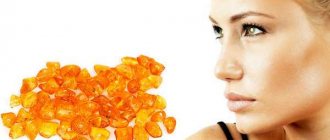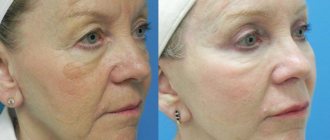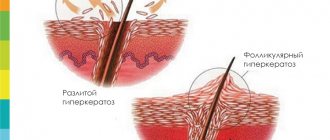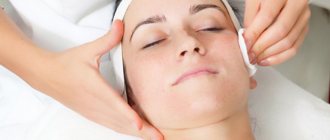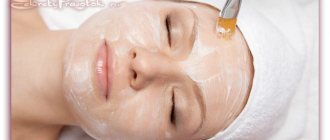Glycolic acid can exist in pure form or can be partially diluted. Peeling with glycolic acid in its pure form has a very strong effect and can even cause epidermolysis with serious consequences, so chemical peeling procedures using acid in this form must be performed very carefully and professionally.
The depth of the glycolic peel depends on
- the concentration used,
- pH,
- procedure time,
- the amount of substance deposited per unit surface,
- from combination with other substances
- and the condition of the skin that is undergoing the procedure.
The higher the acid concentration and lower the pH, the greater the power of the acid.
How many procedures are needed
To obtain the expected and lasting effect, it is necessary to perform a series of at least 4, and preferably 8 procedures with an interval of 14 days. This course of treatment can be repeated twice a year.
To reduce the risk of complications, the first treatments in a series should be at lower acid concentrations. Particular care should be taken with dry skin and prone to telangiectasia (dilated blood vessels). Chemical peels performed with glycolic acid are safe, and the risk of complications and side effects after it is very small (however, the higher the concentration of acid, the more the risk increases). With high acid concentrations and low pH, there is a risk of side effects, i.e. irritation, inflammation, pigmentation disorders, crusting, and even scars. Therefore, it is so important that the procedure is performed by professional cosmetologists. Diluted glycolic acid works more gently (of course, this depends on the proportions). The duration of the facial peeling procedure with glycolic acid is from 1 to 10 minutes.
Bionics has different concentrations and pH of glycolic acid, the most commonly used are: 35%, 50%, 70%, and their pH ranges from 1.6 to 0.6.
35% — 2.8 pH 45% — 2.0 pH 55% — 1.0 pH 70% — 0.5 pH
Of course, the choice of acid concentration is determined by the cosmetologist individually. At low pH, glycolic acid stimulates exfoliation and cell renewal; at higher pH, it only provides a moisturizing effect. Glycolic acid comes in two forms: gel (it works more gently, the acid is released gradually, is well tolerated by people with sensitive skin or acne), and causes only mild irritation. An aqueous solution of glycolic acid is very quickly absorbed by the stratum corneum of the skin. This form of glycolic acid peel is used for people who require intensive skin cleansing.
Glycolic facial peeling with a concentration of 20% and 35% is used for superficial exfoliation, the procedure should be repeated in several stages with an interval of 14 days. This type of peeling allows you to restore radiance and a fresh look to the skin (increases tone, elasticity, eliminates fine wrinkles and excessive dryness of the skin). It is also performed to thoroughly cleanse the skin.
And glycolic peels with a concentration of 50% and 70% exfoliate the deep layers of the skin, showing a strong and quick effect.
Due to the possibility of the appearance of age spots, peeling is not recommended in the summer. This type of peeling can be performed on people with any skin phototype, as well as people with dry and sensitive skin (of course, the concentration should be lower, the pH higher, a mild acid formula is also important).
Peeling gel with glycolic acid 10% Profi 5ml, 120 ml | Pleyana
Pleyana – Profi Peeling gel with glycolic acid 10%. - This is a peeling containing glycolic acid, the anti-aging properties of which were known about half a century ago.
Glycolic acid is found in sugar cane and green grapes. Glycolic acid rejuvenates the skin and minimizes hyperpigmentation.
Rejuvenation of the epidermis is the main goal of glycolic peel therapy.
Using a 10% glycolic peel avoids epidermolysis (flaking, which usually occurs after procedures of this type) - it is a gentle peel, but very effective.
The upper layer of the epidermis is renewed, as well as the basement membrane and mesoderm, because Glycolic acid stimulates fibroblasts to actively produce collagen, elastin and glycosaminoglycans, resulting in increased skin turgor and elasticity, and the skin is significantly rejuvenated.
10% glycolic peeling is one of the most convenient and comfortable options for gentle peeling. Acting on collagen and elastin fibers, glycolic acid leads to their retraction (compression), which gives a good lifting effect. Thus, all layers of the skin are renewed.
glycolic peeling procedure is desirable and indicated for almost everyone with the aim of smoothing the skin texture, eliminating “sun wrinkles”, biostimulating and moisturizing the skin.
It is especially effective and timely to perform a glycolic peeling , in particular gentle glycolic peeling in the autumn-winter period, when the sun is not so active on the skin. The remarkable effect of the glycolic peeling procedure is achieved especially when used in programs for skin correction with the Pleyana collection together with Gommage for facial peeling .
Active ingredients: glycolic acid (10%), urea, aloe Barbados, echinacea extract, camellia, calendula, centella, lemon balm, hamamellis, tily, L-arginine, dihydroquercetin (flavocon).
Indications for the use of glycolic peeling:
- wrinkles
- scarring
- hyperkeratoses
- uneven skin texture
- skin dehydration
- seborrheic dermatitis
- superficial pigment spots
Directions for use: in the evening, apply the peeling gel to previously cleansed, moisturized skin, leave for 5-15 minutes and carefully rinse off the gel, avoiding contact with the eyes. Remove the remnants of the glycolic gel peeling with discs moistened with Plejana Tonic, then apply Pleyana Night Regenerating Cream or Pleyana Anti-Wrinkle Night Cream depending on your age-related skin characteristics.
Consumption of gel peeling with glycolic acid for 1 procedure (face) is 1.5-2 ml. One package (200 ml) - for 100 - 130 procedures (face). ph = 3.5
Many studies on the effects of glycolic acid of glycolic acid for 3-6 months helps fade fine lines, reduce deeper wrinkles, and lighten pigmented areas of the skin.
Cosmetics with glycolic acid , in particular Peeling Gel with glycolic acid “Plejana”, can be used even at a young age.
Glycolic acid regulates keratinization (keratinization) of the epidermis, richly moisturizes, and has antioxidant and anti-inflammatory effects. Glycolic acid stimulates the synthesis of collagen and glycosaminoglycans, and is a conductor of other biologically active components into the deep layers of the skin.
Contraindications to the use of glycolic peeling: herpes, exacerbation of acne, severe rosacea, increased skin sensitivity, the presence of neoplasms on the skin, recent skin injuries, individual intolerance to drugs , chronic dermatoses in the acute stage (eczema, demodicosis).
Glycolic peeling is a peeling with glycolic acid, the anti-aging properties of which were discovered almost half a century ago.
Products with glycolic acid have no age restrictions and can be used even by young girls.
Glycolic acid controls the process of keratinization of the epidermis, intensively moisturizes, has antioxidant and anti-inflammatory effects, stimulates the synthesis of collagen and glycosaminoglycans, and is a conductor of other biologically active components into the deep layers of the skin. Glycolic acid solution is a powerful antioxidant, prevents peroxidation processes in the skin, which allows peeling procedures to be carried out during active sun periods without fear of irritation and pigmentation.
The glycolic peeling procedure is absolutely painless and does not require a subsequent rehabilitation process .
Cosmetic effect of glycolic peeling:
- stimulation and renewal of facial skin cells
- increasing skin elasticity
- reduction of wrinkle depth
- concealing skin imperfections
- even out skin color
- skin hydration
- skin cleansing (destruction of excess sebum and dead cells)
To correct (and or prevent) skin aging (and or hyperpigmentation), the PLEYANA® complex is used:
For normal, oily and combination skin:
- Soft foam
- Phytobiotonic (mattifying or moisturizing - depending on the skin condition)
- Gommage for delicate peeling
- Phytobiotonic
- Peeling gel with glycolic acid (for 15 minutes)
- Tonic
- Serum is an alternative to Botox or “Basic cream with phytoestrogens.”
2 weeks - every other day, then 2 times a week.
For dry, sensitive skin:
- Cosmetic milk
- Phytobiotonic moisturizing
- Gommage (rolling method only!)
- Phytobiotonic moisturizing
- Peeling gel with glycolic acid for 10 minutes (sensitive skin – for 5 minutes!)
- Phytobiotonic moisturizing
- Regenerating cream “Intensive nutrition” or “Basic cream with phytoestrogens”.
In one day. For sensitive skin – once a week.
To correct seborrhea and acne:
- Soft foam with moisturizing complex
- Mattifying phytobiotonic
- Gommage (rolling method only!)
- Mattifying phytobiotonic
- Peeling gel with glycolic acid (for 15 minutes)
- Mattifying phytobiotonic
- "Basic cream with phytoestrogens."
2 weeks - every other day, then 2 times a week.
When performing glycolic peeling, you should avoid peloid therapy, contrast procedures, ultraviolet irradiation and heliotherapy.
Contraindications to the use of glycolic peeling: herpes, exacerbation of acne, severe rosacea, increased skin sensitivity, the presence of tumors on the skin, recent skin injuries, individual intolerance to drugs, chronic dermatoses in the acute stage (eczema, demodicosis).
Consumption for 1 procedure (face) – 2/2.5 ml
Attention! A mandatory test sample is recommended before use! (on the bend of the elbow)
Types of glycolic facial peels
Gliсopeel has an exfoliating effect - cleanses, adds shine, increases the synthesis of collagen, elastin and glycosaminoglycans (GAG), improves skin condition, reduces wrinkles, increases the permeability of the epidermis (helps the penetration of active components deep into the skin, treats acne, tightens pores, relieves acne symptoms, pigmentation spots;
GLICOPEEL Classic
Composition: 45% - partially neutralized glycolic acid. GLICO PEEL K
Ingredients: 33% - glycolic acid, 10% - kojic acid, 10% - citric acid, 9% - lactic acid, 5% - salicylic acid, epilobium, bearberry extract. Application: Optimal for people aged 25-30 with oily skin. Seborrheic dermatitis. Note. 6-8 procedures. Interval 14 days. You can't sunbathe, even covering your face. Recommended cream protection with SPF is 80. GLICO PEEL KH
Composition: 44% - glycolic acid, 10% - citric acid, 10% - lactic acid, 5% - kojic acid, 2% - hydroquinone, 3% - salicylic acid. Application: For the treatment of hyperpigmentation, as an intermediate peeling before mid-peelings. Note. 6-8 procedures. Interval 14 days. You can't sunbathe, even covering your face. The recommended protection of the cream with SPF is 80.
Indications for the procedure
Indications for glycolic peeling are the presence of the first signs of aging on the skin, facial wrinkles, sagging and withering of the skin with its excessive dryness, acne, acne and comedones, pigment spots or grayness of the skin, as well as their enhanced relief.
This type of chemical peeling is suitable for people with absolutely any skin type; the only limitation in its use is the age criterion; its use is inappropriate for persons under 15 years of age. Also, peeling is not carried out if the patient has acute diseases, during pregnancy and lactation, or with individual intolerance to glycolic acid.
Peeling
Before any chemical care, special preparation is required, which includes:
- refusal to tan;
- maintaining the integrity of the skin;
- applying a gel containing no more than 1% fruit acids;
- if possible, carrying out mesotherapy, biorevitalization;
- Protect your face outdoors with SPF-30 or higher.
- if necessary, undergo a course of treatment with anti-inflammatory drugs.
How it goes
- Makeup removal and complete cleansing of the skin from dirt and dust are performed.
- Using a special brush, apply the product along the massage lines and leave it for a while (the duration is determined by the cosmetologist).
- The substance is removed with a special neutralizer (some compounds are simply washed off with water).
- Apply a cream with a calming effect.
The procedure lasts 30 minutes.
Course duration
Visible changes are diagnosed after one session, but high-quality results are possible when performing a basic complex, which includes 4-7 procedures depending on the complexity of the problems.
Intervals should be 1.5-2 weeks. It is recommended to conduct no more than two courses during the year.
Healing period
It will take several weeks to recover from acid cleaning.
It is absolutely normal if slight swelling, redness, itching and discomfort appear in the first hours. On days 2-3, the epithelial plates will separate. The phenomena will go away on their own; there is no need to contact a specialist. You need to see yourself if the symptoms intensify and do not subside.
Cost of services in salons
Glycolic peeling can be done in the salon or at home. A professional procedure is preferable because it minimizes the risk of complications and guarantees high-quality performance. A specialist can perform not only superficial, but also medium or deep exfoliation.
It is recommended to use solutions with a low acid content. They are suitable as comprehensive care, but cannot solve serious age-related problems.
The price for a session is from 1,500 to 15,000 rubles and depends on the level of the clinic, the experience of the specialist, the brand and concentration of the drug, as well as additional manipulations.
When carrying out peeling at home, you need to purchase products only in a specialized store, pharmacy, or through direct sales via the Internet. You should first familiarize yourself with the product quality certificates and the protocol of the procedure.
Moscow
| Salon name | Address | Cost of the procedure | Telephone |
| Reform | Pestovsky lane, 5 | 4200 | +7 495 152‑82-09 |
| Studio Expert PMU | st. Novoryazanskaya, 26, building 1 | 3000 | +7 |
| Through the Looking Glass | st. Bolshaya Tulskaya, 2 | 2750 | +7 |
Saint Petersburg
| NNEOMED | Vyborg highway, 5, building 1, lit. AND | 1700 | +7 |
| DLongevity | Uul. Bronnitskaya, 15 | 3000 | +7 ( |
| AAvanta | NNevsky Prospekt, 136 | 2000 | +7 ( |
Ekaterinburg
| Candela | st. Pervomaiskaya, 37 | 2000 | +7 |
| Esty Line | st. Popova, 33 | 2300 | +7 |
| First photoepilation center | st. Chapaeva, 14 kb. | 1850 | +7 |
Voronezh
| Secrets of Cleopatra | st. Generala Lizyukova, 16 | 1800 | +7 |
| Aesthetic center Allure | st. 20th anniversary of the Komsomol, no. 5 | 3300 | +7 |
| Cosmetology clinic VrnCOSMO | St. Kholzunova, 38 | 1800 | +7 (473) 2-24-09 |
general description
Glycolic, or aliphatic hydroxy acid, has long been used by cosmetologists because it has irreplaceable properties to accelerate neocollagenesis and destroy the bonds between dead cells. It gently and carefully removes keratinized epidermis and activates the formation of new ones, stimulating the production of collagen and glucosamine (hyaluronic acid).
The procedure provides rejuvenation at the cellular level, prevents aging, polishes and whitens, eliminates pigmentation and reduces the likelihood of acne.
Effectiveness is expressed in:
- Active synthesis of collagen by fibroblasts, which helps smooth out wrinkles and increase skin density.
- Low molecular weight, due to which the substance easily reaches the deep layers of the dermis.
- The ability to penetrate the intercellular space, resulting in its increase and a lifting effect.
- Saturated hydration, which is ensured by restoration of acidity levels and lipid-carbohydrate metabolism.
Buyanov Sergey Yurievich (Expert Doctor):
Hydroxyacetic (glycolic) acid is widely used in dermatology in the treatment of hyperkeratosis, seborrhea (dandruff), ichthyosis, and photoaging. Recommended for dry skin.
How does the procedure work?
Peeling based on glycolic acid is carried out in several successive stages and requires preliminary preparation.
Initially, the facial skin is cleansed and degreased, then a solution or gel containing glycolic acid is applied to it and left for the required amount of time.
Then, the drug is removed with a special neutralizing solution.
At the end of the procedure, a protective moisturizer is applied to the face. To achieve the desired result, it is necessary to undergo a full course of therapy, including from three to ten procedures. The final decision on their number is made by the cosmetologist after a preliminary examination of the patient.
To avoid unforeseen situations, the patient should refrain from visiting baths and saunas, solariums, and sunbathing for one week after glycolic peeling. It is also necessary to use protective equipment prescribed by a cosmetologist, which will not only eliminate the risk of complications, but also enhance the effect of the procedure.
Types of peeling
Cleansing with glycolic acid differs in the degree of impact, i.e. concentration of the main active substance. An experienced cosmetologist can assess the condition of your skin and choose the right care option.
It is not recommended to work with highly concentrated compounds on your own at home. Incompetent actions can lead to serious negative consequences.
Surface
It is performed with acid, the percentage of which does not exceed 40. The pH level of acidity can range from 2.5 to 4.5. Works in the top layer without penetrating into the thickness of the tissue.
Gently exfoliates the epidermis, smoothes the texture, improves the color and texture of the face.
- Suitable for young girls with problematic and inflamed dermis with increased sebum production. Made at home in summer and spring.
- Care can also be carried out as preparation before a more serious procedure.
Median
Acid is used in a concentration of 50 to 70%.
Indications for use: pronounced folds, scars, acne, hyperkeratosis, excess pigmentation, expression lines and uneven skin tone.
The result is especially noticeable on dry, lifeless skin that needs nutrition and hydration, as well as excessively oily skin.
The rejuvenating effect is achieved through increased blood circulation and normalization of keratinization processes (death and keratinization of cells).
Deep
It is performed exclusively in an outpatient clinic by a dermatocosmetologist or plastic surgeon.
The acid concentration is 70%, so complications often appear: burns, red spots, pimples, brown crusts, severe peeling and pain.
Rehabilitation takes time and compliance with care conditions. However, a long and painful recovery ends with complete tissue regeneration and visual rejuvenation.
Sometimes the procedure is necessary as preparation for plastic surgery.
Advantages and disadvantages
| pros | Minuses |
|
|

